
Jean Nicolas Arthur Rimbaud was a French poet known for his transgressive and surreal themes and for his influence on modern literature and arts, prefiguring surrealism. Born in Charleville, he started writing at a very young age and excelled as a student, but abandoned his formal education in his teenage years to run away to Paris amidst the Franco-Prussian War. During his late adolescence and early adulthood, he produced the bulk of his literary output. Rimbaud completely stopped writing literature at age 20 after assembling his last major work, Illuminations.

Paul-Marie Verlaine was a French poet associated with the Symbolist movement and the Decadent movement. He is considered one of the greatest representatives of the fin de siècle in international and French poetry.

Robert Faurisson was a British-born French academic who became best known for Holocaust denial. Faurisson generated much controversy with a number of articles published in the Journal of Historical Review and elsewhere, and by letters to French newspapers, especially Le Monde, which contradicted the history of the Holocaust by denying the existence of gas chambers in Nazi death camps, the systematic killing of European Jews using gas during the Second World War, and the authenticity of The Diary of Anne Frank. After the passing of the Gayssot Act against Holocaust denial in 1990, Faurisson was prosecuted and fined, and in 1991 he was dismissed from his academic post.

Total Eclipse is a 1995 erotic historical drama film directed by Agnieszka Holland, based on a 1967 play by Christopher Hampton, who also wrote the screenplay. Based on letters and poems, it presents a historically accurate account of the relationship between 19th-century French poets Arthur Rimbaud and Paul Verlaine (David Thewlis. Warner Bros. has included the film in the catalogue of Warner Archive Collection.
Illuminations is an incomplete suite of prose poems by the French poet Arthur Rimbaud, first published partially in La Vogue, a Paris literary review, in May–June 1886. The texts were reprinted in book form in October 1886 by Les publications de La Vogue under the title Les Illuminations proposed by the poet Paul Verlaine, Rimbaud's former lover. In his preface, Verlaine explained that the title was based on the English word illuminations, in the sense of coloured plates, and a sub-title that Rimbaud had already given the work. Verlaine dated its composition between 1873 and 1875.

Georges Alphonse Fleury Izambard was a French school teacher, best known as the teacher and benefactor of poet Arthur Rimbaud. He taught at the Collège de Charleville in Charleville, where his nickname was "Zanzibar".
French poetry is a category of French literature. It may include Francophone poetry composed outside France and poetry written in other languages of France.
Le Bateau ivre is a 100-line verse-poem written in 1871 by Arthur Rimbaud. The poem describes the drifting and sinking of a boat lost at sea in a fragmented first-person narrative saturated with vivid imagery and symbolism. It is considered a masterpiece of French Symbolism.
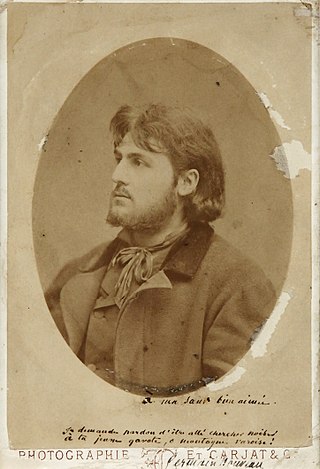
Germain Marie Bernard Nouveau was a French poet associated with the symbolist movement.
Poésies is the title attributed to the poems of Arthur Rimbaud written between approx. 1869 and 1873. Les étrennes des orphelins (1869) is the first known poem of Rimbaud.

A Season in Hell is an extended poem in prose written and published in 1873 by French writer Arthur Rimbaud. It is the only work that was published by Rimbaud himself. The book had a considerable influence on later artists and poets, including the Surrealists.
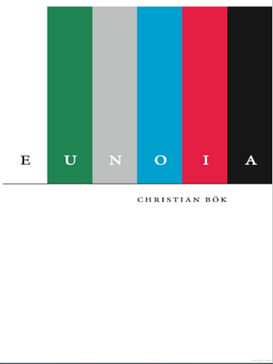
Eunoia (2001) is an anthology of univocalics by Canadian poet Christian Bök. Each chapter is written using words limited to consonants and a single vowel, producing sentences like: "Hassan can, at a handclap, call a vassal at hand and ask that all staff plan a bacchanal". The author believes "his book proves that each vowel has its own personality, and demonstrates the flexibility of the English language." The work was inspired by the Oulipo group, which seeks to create works using constrained writing techniques.
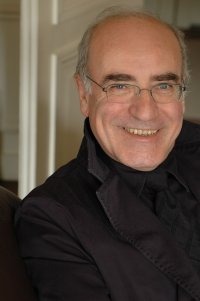
Claude Jeancolas was a French writer, art historian and journalist. He is best known for his work on Arthur Rimbaud.

Verlaine et Rimbaud is an album by Léo Ferré. It was released in December 1964 by Barclay Records. This album is one of the first studio double albums in popular music history.

Ernest Delahaye (1853–1930) was a French writer and essayist. He maintained a long and close friendship with Arthur Rimbaud whom he first met in April 1865 when they attended school together in Charleville in the Ardennes region of France. He and Rimbaud had a shared interest in poetry, and he would help Rimbaud by making fair copies of his drafts for distribution to Rimbaud's literary friends. He was one of the few (seven) recipients of the privately printed A Season in Hell, though Rimbaud later asked for it back to give it to someone else. According to Rimbaud biographer, Charles Nicholl, Rimbaud's "[last] strictly dateable poem" was contained in a letter to Delahaye of 14 October 1875. Through Rimbaud, Delahaye also met poet Paul Verlaine and became friendly with him. Verlaine wrote a poem - Sonnet Boiteux - which is dedicated to him. Delahaye mixed his civil service career, working at the Education Ministry, with writing biographical material on both Rimbaud and Verlaine, contributing first-hand accounts of the poets' lives and families.
Paterne Berrichon, the pseudonym of Pierre-Eugène Dufour was a French poet, painter, sculptor and designer. He is best known as husband of Isabelle Rimbaud, and the brother-in-law and publisher of Arthur Rimbaud.
Hombres is a collection of erotic poetry by Paul Verlaine written sometime between 1887 and 1891, with the exception of "Dizain ingénue" and "Le Sonnet du trou du cul". The collection was originally hand-written and distributed by Verlaine, himself. Hombres includes "The Sonnet to an Asshole", an erotic poem co-written by Arthur Rimbaud in 1871.
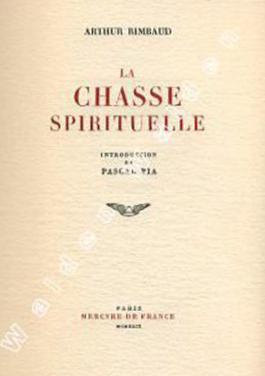
The Spiritual Hunt is a prose poem purportedly written by French writer Arthur Rimbaud, claimed to be his masterpiece by his friend and lover Paul Verlaine. Supposedly strongly resembling in form the only book he published during his lifetime, A Season in Hell, the poem is considered to be one of the most famous lost artworks, despite the fact that in 1949, a twelve-page work by the same title was unveiled to the public by Pascal Pia; Rimbaud scholars, almost unanimously, have denounced this poem as a literary forgery.

The Corner of the Table is an oil-on-canvas painting by French artist Henri Fantin-Latour, created in 1872. It was exhibited at the 1872 Salon. It is held at the Musée d'Orsay, in Paris.
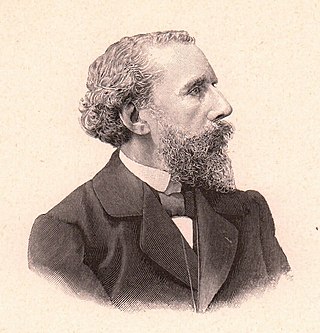
Albert Mérat was a French poet.

![Rimbaud caricatured by Luque in the review Les Hommes d'aujourd'hui [fr] in January 1888. Rimbaud Voyelles caricature.jpg](http://upload.wikimedia.org/wikipedia/commons/thumb/c/c5/Rimbaud_Voyelles_caricature.jpg/220px-Rimbaud_Voyelles_caricature.jpg)













